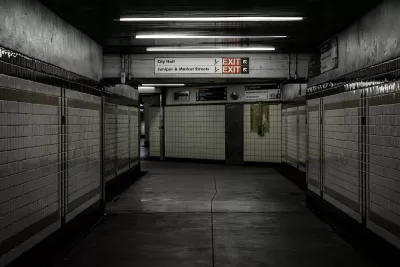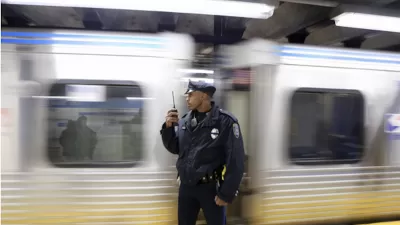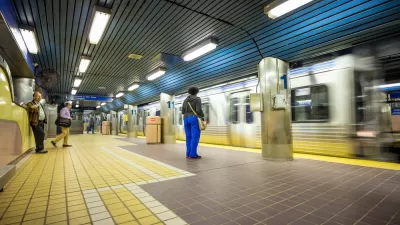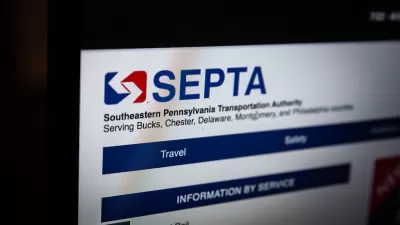More than a third of Americans believe major transit systems are too unsafe to ride. The built environment can change that.

In an article for WHYY, Owen Racer and Jadon George describe how the built environment in and around transit infrastructure — in Philadelphia and beyond — contributes to a sense of fear among riders, causing them to avoid public transit due to a heightened anxiety created by reports of violent incidents.
Citing Yvette Sheline of the University of Pennsylvania’s Department of Psychiatry, the article explains, “From gates and sidewalks to subterranean hallways, the physical environments that make up a transit system can affect how safe people feel using them.”
The article describes a failed SEPTA effort to deploy an AI-powered surveillance tool to scan for firearms in stations and trains, as well as how the architecture of stations can improve visibility and openness and make riders feel safer. While some systems, including SEPTA and New York City’s subway system, are deploying additional law enforcement, Sheline says an increased police presence serves to “raise feelings of anxiety for most riders as it signals the environment is dangerous.”
FULL STORY: Can SEPTA’s infrastructure counter transit anxiety?

Study: Maui’s Plan to Convert Vacation Rentals to Long-Term Housing Could Cause Nearly $1 Billion Economic Loss
The plan would reduce visitor accommodation by 25,% resulting in 1,900 jobs lost.

Alabama: Trump Terminates Settlements for Black Communities Harmed By Raw Sewage
Trump deemed the landmark civil rights agreement “illegal DEI and environmental justice policy.”

Why Should We Subsidize Public Transportation?
Many public transit agencies face financial stress due to rising costs, declining fare revenue, and declining subsidies. Transit advocates must provide a strong business case for increasing public transit funding.

Paris Bike Boom Leads to Steep Drop in Air Pollution
The French city’s air quality has improved dramatically in the past 20 years, coinciding with a growth in cycling.

Why Housing Costs More to Build in California Than in Texas
Hard costs like labor and materials combined with ‘soft’ costs such as permitting make building in the San Francisco Bay Area almost three times as costly as in Texas cities.

San Diego County Sees a Rise in Urban Coyotes
San Diego County experiences a rise in urban coyotes, as sightings become prevalent throughout its urban neighbourhoods and surrounding areas.
Urban Design for Planners 1: Software Tools
This six-course series explores essential urban design concepts using open source software and equips planners with the tools they need to participate fully in the urban design process.
Planning for Universal Design
Learn the tools for implementing Universal Design in planning regulations.
Smith Gee Studio
Alamo Area Metropolitan Planning Organization
City of Santa Clarita
Institute for Housing and Urban Development Studies (IHS)
City of Grandview
Harvard GSD Executive Education
Toledo-Lucas County Plan Commissions
Salt Lake City
NYU Wagner Graduate School of Public Service





























